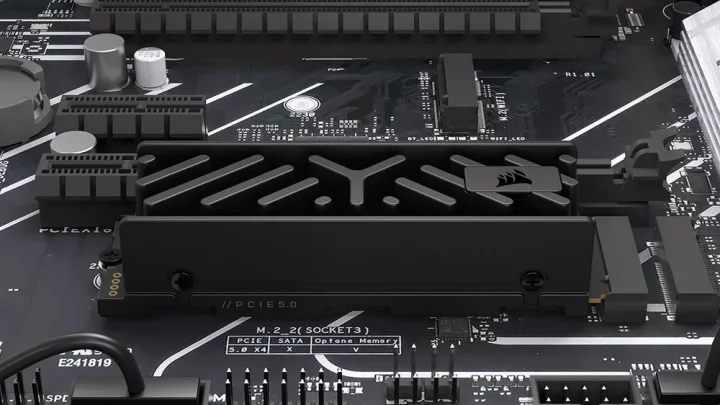Ever since the first SSDs using PCI Express 5.0 hit the market, their benefits in sequential transfer rates have been clouded by a serious drawback: the high consumption of the Phison E26 controller on which they were all based. This leads to high temperatures, slowdowns, or even system crashes in the case of some SSDs. Fortunately, this is starting to change, and energy-efficient “Gen 5 SSDs” are finally coming to the market, making them useful in laptops.
We wrote about the upcoming new controllers for PCIe 5.0 SSDs to solve consumption (and heating) problems in June after Computex. Now one of the first (or perhaps the very first) SSD with one of these sought-after chips has arrived on the market – the Phison E31T controller, which is a cheaper model of the company, but still achieves quite high performance, and with its lower mainstream performance classification comes a pleasantly reduced power consumption and good energy efficiency.
Corsair MP700 Elite
The module is from Corsair and is called Corsair MP700 Elite. The name might make it seem that it costs more than the previous high-end MP700 Pro and MP700 Pro SE, however, this is not the case, the MP700 Elite is a lower priced SSD for the mainstream, standing below them. However, the performance could probably be replaced by the older, slower MP700 module with Phison E26.
The Corsair MP700 Pro uses a Phison E31T controller, as mentioned, and with it 3D NAND with TLC writing. This is directly mentioned in the specifications, so it should not replace the eventual silent replacement of chips with QLCs with worse life and performance. The modules are manufactured in the M.2 2280 version and offered in a version with a passive cooler or in a basic bare version. From both, you can choose between two capacities – 1 TB or 2 TB. There are no smaller or larger versions yet.
The controller is already produced by TSMC’s 7nm process, compared to the inferior 12nm process of the high-end Phison E26 (which is one of the reasons why SSDs with it will be more economical). It has the same PCIe 5.0 ×4 interface (and supports the NVMe 2.0 protocol), but performs slightly worse, since it should only be four-channel and does not use a DRAM cache.
The maximum sequential speed is 10,000 MB/s when reading and 8,500 MB/s when writing, which means that Phison E31T, despite its economical parameters, can provide similar speeds as the first generation of PCIe 5.0 modules with Phison E26 – namely the slower NAND chips used at the time they also limited the speed to roughly 10 GB/s. Even the paper performance values in random access are not bad – the modules are supposed to reach up to 1,300,000 IOPS in reading and up to 1,400,000 IOPS in writing.
The modules have a write life corresponding to 600 rewrite cycles per cell (600 TB and 1200 TB of total write for the 1TB and 2TB models) and still a five-year warranty. After all, it is not a lowend even in terms of price – although we are talking about a relatively cheaper solution, even in the case of these SSDs, you pay extra for “Gen 5”. Official prices in the manufacturer’s e-shop are $150 for a 1TB module and $255 for a 2TB module (for versions without a cooler). Corsair’s distributors should slowly start selling these SSDs worldwide, but price search engines do not register them here yet, so it will probably take a while for them to arrive.
But reviews have already been published, which you can find, for example, on ComputerBase, TechPowerUpu or Tom’s Hardware. The TechPowerUp website also measured the consumption, which came out to 3.1-4.8 W under load, so the goal of finally turning the PCIe 5.0 SSD into an energy-efficient storage seems to have been achieved (rest consumption was then 74 mW with energy-saving modes) .
Hopefully this controller will appear in other modules soon. During Computex, MSI’s Spatium M560 SSD was also announced with the Phison E31T, but it has not yet been seen in stores.
Sources: Corsair (1, 2), TechPowerUp
Source: www.cnews.cz



